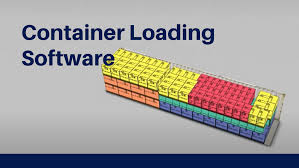Introduction
 Starting with the obvious: shipping is messy. It’s global, it’s layered, and it’s full of moving parts, literally. And if you’re not tracking those parts, you’re losing money.
Starting with the obvious: shipping is messy. It’s global, it’s layered, and it’s full of moving parts, literally. And if you’re not tracking those parts, you’re losing money.
That’s where container shipping software comes in. But like anything that promises to “streamline operations,” it’s not all roses. There’s friction. There’s a cost. There’s complexity.
So let’s break it down.
The Good Stuff First: Because That’s What Sells
Container shipping software is built to solve chaos. It tracks containers, automates documentation, predicts delays, and gives you dashboards that look like they belong in a sci-fi movie. You get real-time visibility. You get alerts. You get control.
In 2024, over 78% of mid-sized logistics firms adopted some form of container tracking tech. That’s not a trend, that’s a shift. Because clients don’t want vague ETAs anymore, they want timestamps. They want accountability.
And the software delivers. Most platforms integrate with port systems, customs databases, and weather feeds. That means fewer surprises. Fewer angry emails. Fewer lost containers.
But It’s Not Magic: Let’s Be Real
Here’s the thing: software doesn’t fix bad processes. If your team doesn’t know how to use it, it’s just a fancy screen. If your data’s messy, your insights will be too. Garbage in, garbage out.
And then there’s the cost. A decent container shipping platform can run you $1,500 to $5,000 per month, depending on features and scale. That’s not pocket change. For small operators, it’s a stretch. For startups, it’s a gamble.
Plus, integration isn’t always smooth. Legacy systems don’t play nice. APIs break. Training takes time.
The Middle Ground: Where Most Businesses Live
Most companies don’t go all-in. They start with tracking. Then maybe add automated invoicing. Then maybe predictive analytics. It’s a slow build. And that’s okay. Because the real value isn’t in the software, it’s in how you use it.
In one study, firms that used container tracking software to optimize routes saw a 19% reduction in fuel costs. That’s real savings. But only if you’re actually analyzing the data, not just staring at it.
So yeah, the software’s powerful. But it’s not a silver bullet. It’s a tool. And tools need skilled hands.
Let’s Talk About Visibility: The Real MVP
This is where container tracking software shines. You know where your cargo is. You know when it left port. You see if it’s stuck in customs. You know if the ship’s rerouted due to weather. That kind of visibility? It’s gold.
In 2025, customer satisfaction scores were 23% higher for logistics firms that offered real-time tracking. That’s not fluff, that’s retention. That’s repeat business.
And it’s not just about clients. Your internal teams benefit too. Sales knows when to promise delivery. Ops knows when to prep warehouses. Finance knows when to invoice. Visibility isn’t just a feature. It’s infrastructure.
The Downsides: Because Every Tool Has Them
Let’s not pretend it’s perfect. Software updates can break things. Vendors can go under. Data breaches are real. And if your system goes down mid-shipment? You’re flying blind.
Also, not all platforms are created equal. Some are bloated. Some are buggy. Some look great in demos but fall apart in real-world use. Choosing the right one? That’s a whole project in itself.
And don’t forget the human factor. Resistance to change is real. Some staff will hate the new system. Some will ignore it. Some will find ways to bypass it. That’s not a tech issue, that’s a culture issue.
So What’s the Verdict?
Container shipping software is essential. But it’s not effortless. It gives you control. It gives you data. It gives you speed. But it also demands investment in money, time, and training.
If you’re scaling, it’s non-negotiable. If you’re small, it’s a strategic decision. Either way, don’t buy the hype. Buy the solution that fits your workflow. And remember: software doesn’t run your business. People do.
Don’t Just Track. Adapt.
The shipping world isn’t slowing down. It’s getting faster. Smarter. More demanding.
If you’re still using spreadsheets and phone calls to track containers, you’re already behind. But jumping into software without a plan? That’s just a different kind of mistake.
So take your time. Audit your needs. Test the tools. Train your team. And then, only then, go live.
Because in logistics, the difference between profit and loss is often just one delayed container. And the software? It’s your early warning system.
Leave a Reply